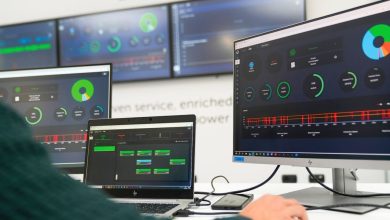
Fulfillment used to be straightforward. You stored inventory, packed boxes when orders came in, and shipped them out. The biggest challenge was keeping enough stock on hand without tying up too much money in products sitting in a warehouse.
Fulfillment warehouses look nothing like they did five years ago. Walk into one now and you will see robots moving everywhere, cameras scanning packages, and algorithms making thousands of decisions per minute about where products should go and when they need to be there. For businesses using FBA services, all of this technology is working for you whether you realize it or not.
Inventory Forecasting Actually Works Now
Most businesses have tried forecasting inventory at some point. You look at what sold last month, last quarter, maybe last year if you’ve been around that long. You make your best guess about what you’ll need, add some extra buffer stock just in case, and hope you got it right.
That approach fails more often than it succeeds. You either run out of your best sellers right when demand spikes, or you’re stuck with three months of inventory on something that stopped selling. Both situations hurt your cash flow and your ability to grow.
Machine learning changed this completely, but not in the way most people think. It’s not magic. These systems just process way more information than any person could track. They’re looking at your sales data, sure, but also weather forecasts, what’s trending on social media, how your competitors are pricing similar items, shipping delays at ports, and hundreds of other factors.
The system learns what matters for your specific products. Maybe rain in the midwest affects your sales even though you wouldn’t have connected those dots yourself. Maybe certain items always sell better exactly 11 days after a competitor raises their prices. The algorithm finds these patterns and uses them.
What this means practically is you stop running out of stock on your best sellers. You also stop paying storage fees on dead inventory because the system warns you weeks before something becomes a problem. One company I know saved about $40,000 in storage fees last year just by letting the forecasting system tell them when to run a promotion on slow-moving items before those fees piled up.
Warehouses Run on Robots Now
Before robots, a warehouse worker would get an order, look at where that product was stored then walk around until they found it, grab it, and then walk back to a packing station. If the warehouse was busy, they might walk several miles during a shift just moving between pick locations.
Robots changed all of this. Now the worker stays in one place. The robot gets the instruction, drives to the right shelf, picks up the entire shelf unit, and brings it to the worker. The worker takes what they need, and the robot takes the shelf back.
Now, orders are processed in a fraction of the time. What used to take 10 or 15 minutes now happens in two, and those minutes add up when you’re processing thousands of orders a day. Faster processing means earlier cutoff times for same-day shipping, better delivery estimates for customers, and delays don’t happen as often during peak seasons.
The accuracy improved too. Robots don’t grab the wrong item or misread a label. Computer vision systems double check every pick before it moves to packing. Error rates dropped by about 80% in facilities that fully used this technology.
You’re not building or maintaining any of this infrastructure yourself. It’s just there, working for every order that goes through FBA services. That’s a huge advantage over trying to run your own fulfillment operation.
Quality Control Happens Automatically
Returns are expensive in ways that don’t always show up clearly in your P&L. There’s the obvious lost sale and return shipping cost. But there’s also the time your team spends processing the return, figuring out if the item can be resold, dealing with the customer who’s now frustrated, and potentially losing that customer forever.
Returns caused by fulfillment mistakes hurt the most because they were completely avoidable. For example, the customer ordered the right thing, you had the right inventory, but somewhere in the fulfillment process something went wrong.
Weight checking adds another layer. Every package gets weighed and compared to what it should weigh based on the order. If a package is too light or too heavy, something’s wrong and it is fixed right away.
Orders Ship From the Right Place
When someone orders your product, a routing algorithm decides in milliseconds which warehouse should fulfill it. It’s considering inventory levels at every facility, how far each one is from the customer, how busy each facility is right now, which carriers are performing well in that region, and current weather that might affect shipping.
This happens for every single order. Two people in the same city ordering the same product might get it shipped from different warehouses based on current conditions. Maybe one warehouse is slammed that day, so new orders route to a facility with more capacity, even if it’s not that farther away.
The system also balances speed against cost against capacity. During normal times it optimizes for speed. During peak seasons it spreads orders around to prevent any facility from getting overwhelmed and creating delays.
You see this as better delivery times without managing any of the complexity. The algorithm handles variables you couldn’t possibly track manually across multiple locations and thousands of orders per day. It adjusts in real time as conditions change.
Voice Commands Speed Everything Up
Walk through a modern fulfillment center and you’ll see workers wearing headsets. They’re not on phone calls. The system talks to them, telling them where to go and what to pick. They respond verbally to confirm actions.
This sounds like a small change but it makes a huge difference because workers aren’t stopping to look at scanners, enter data, or check screens. They are hands free and they can focus on what they’re doing.
Voice systems also build in verification naturally. The system says the item name and location, then the worker finds it and reads back the SKU to confirm. This happens as part of the normal workflow, not as an extra step that slows things down.
The system also tracks everything. If picking times increase in one section of the warehouse, managers get an alert. Maybe the layout needs adjustment, or inventory is in the wrong spot, or there’s some other issue causing slowdowns. The voice system captures this data automatically without anyone filling out reports.
Everything Works Together
These technologies don’t run separately. They’re all connected, feeding data to each other and getting smarter over time. Machine learning predicts what inventory you need. Robots retrieve it efficiently. Computer vision verifies accuracy. Smart routing picks the best fulfillment location. Voice systems confirm each step.
For your business, this means improvements happen without you doing anything. You’re not implementing separate systems or managing complex integrations. It’s all infrastructure that runs in the background while you focus on your products and customers.
The competitive advantage isn’t just about being faster or more accurate anymore. It’s about having access to capabilities that would cost millions to build yourself. Mid-size businesses can compete with much larger companies because everyone’s using the same advanced infrastructure.
What This Means Going Forward
This technology keeps evolving quickly. What seems advanced today will be standard within a couple years. Understanding what’s possible helps you make better decisions about your product strategy, how you bundle items, and how you compete in your market.
If you’re using FBA services, you’re already benefiting from all of this. The question isn’t whether to adopt these technologies. You already have them. The question is how to structure your business to get the most value from them.
That means thinking differently about inventory. You can hold less safety stock because forecasting is reliable. You can test new products faster because the system helps you identify demand signals early. You can create bundles based on real customer behavior instead of assumptions.
Businesses doing well in this environment treat fulfillment technology as a strategic asset, not just an operational requirement. They ask what becomes possible when inventory forecasting works, picking is accurate, and delivery is fast. Then they build their approach around those capabilities instead of working around fulfillment limitations.






